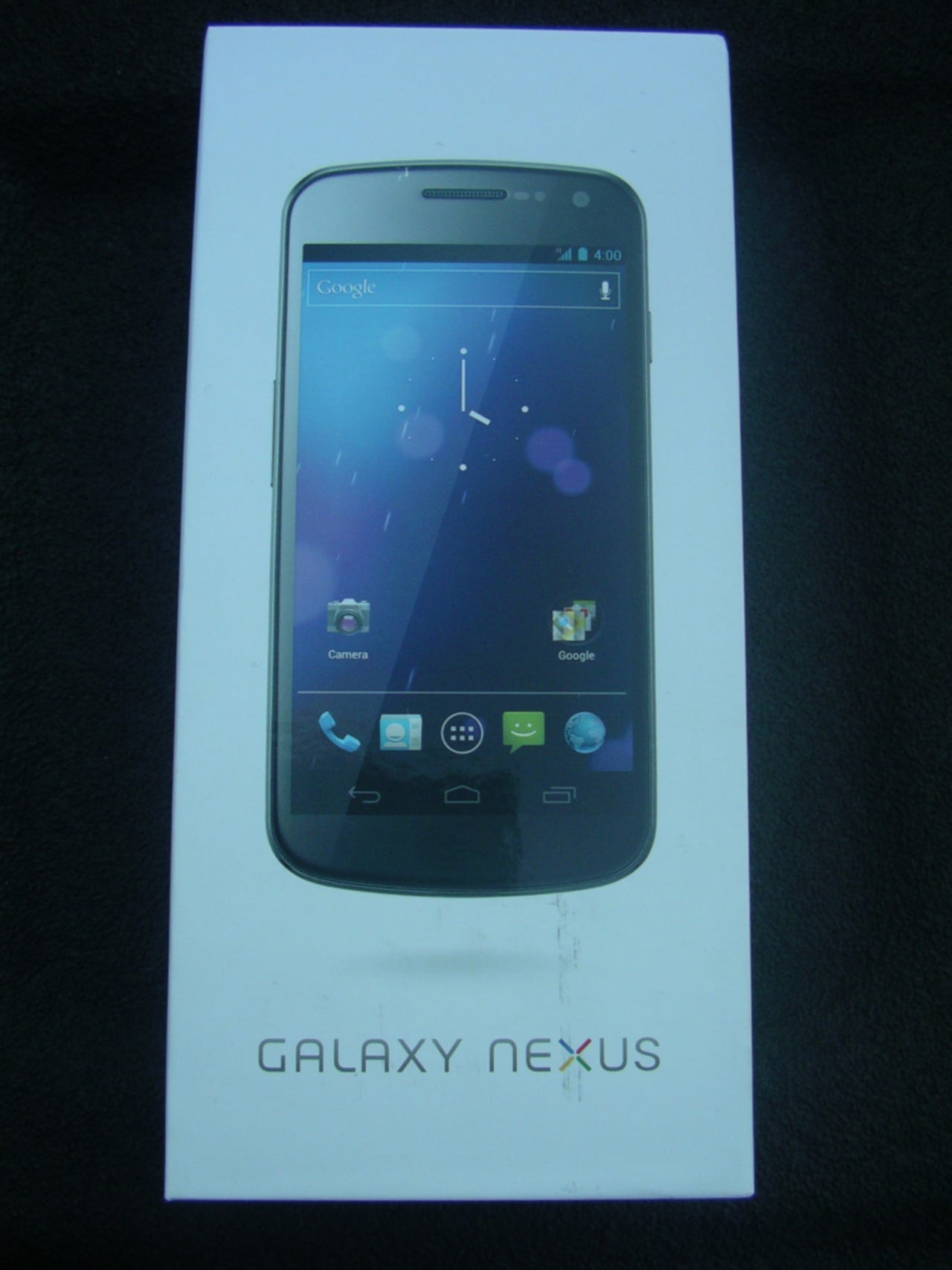Hands-on first impressions of the Samsung Galaxy Nexus


Every year Google works with a manufacturer to release an Android device running the latest version of the OS. This year we have the Galaxy Nexus from Samsung that is available now with GSM bands while the CDMA one will be coming soon to Verizon.
Check out my detailed thoughts on the Galaxy Nexus in the Smartphones & Cell Phones blog.
The box is unusually long and as you can see here the device is large.
Inside the box you will find a USB cable, power adapter, the battery, wired stereo headset, and Quick Start Guide.
The battery is quite large and the Nexus uses a standard SIM card.
Samsung is known for making thin plastic back covers, but the one on the Galaxy Nexus is really flimsy. It does feel good when on the device though.
Here is my lineup of smartphones and as you can see here we have the Nokia N8, HTC Radar 4G, Samsung Galaxy Nexus, Apple iPhone 4S, Nokia N9, and Palm Pre 2.
The traditional power button is found on the upper right of the Galaxy Nexus, just like all other Samsung devices.
There are some gold contacts on the lower right side that will be used for dock accessories.
There is a volume button on the upper left.
You can see the 5 megapixel camera and flash centered on the back.
The microUSB port and 3.5mm headset jack are both found on the bottom.
A front facing camera is found on the front above the display.
Initial startup of the Galaxy Nexus.
There are five available home screens on the Galaxy Nexus that you can load up with widgets. The three buttons on the bottom appear on the display when needed and are different than other Android devices.
Here are more shortcuts and widgets. This is the first time we have seen an official Gmail widget on Android.
A wireless control widget is handy to have on one of the panels.
A new launcher interface is used in Ice Cream Sandwich.
Widgets are now found in the launcher of ICS.
The phone dialer on the Galaxy Nexus is quite a bit different than we have seen on other Android devices.
Contact pictures need a bit of work on the Galaxy Nexus due to the format they sync to servers.
The multi-tasking cards interface in ICS is slick and similar to webOS.
A new settings area is also present in ICS.
The image gallery application in ICS is slick.
Like iOS, you simply drag and drop app shortcuts onto each other to create folder on the home screens. You can rename the folder too and the icon for the folder takes on the characteristics of the apps inside.
Galaxy Nexus image gallery 1
Galaxy Nexus image gallery 2